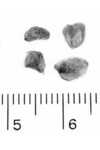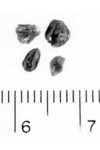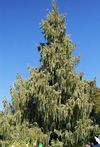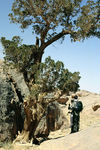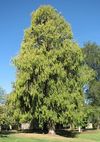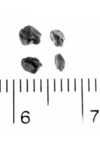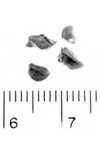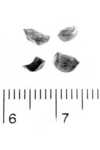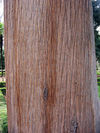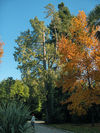Genus Cupressus
The genus Cupressus is one of several genera within the family Cupressaceae that have the common name cypress; for the others, see cypress.Species in the genus Cupressus of plants
Arizona cypress - It is a medium-sized evergreen tree with a conic to ovoid-conic crown. It grows to heights of 10-25 m, and its trunk diameter reaches 0.5 m. The foliage grows in dense sprays, varying from dull gray-green to bright glaucous blue-green in color. The leaves are scale-like, 2-5 mm long, and produced on rounded shoots. The seed cones are globose to oblong, 15-33 mm long, with 6 or 8 scales, green at first, maturing gray or gray-brown about 20–24 months after pollination. The cones remain closed for many years, only opening after the parent tree is killed in a wildfire, thereby allowing the seeds to colonize the bare ground exposed by the fire. The male cones are 3-5 mm long, and release pollen in February-March.
Baker cypress - Cupressus bakeri grows in a restricted area of Northern California: in Siskiyou, Modoc, Shasta, Plumas and Tehama Counties; and in southwest Oregon: very localized in Josephine and Jackson Counties.
Cupressus cashmeriana - Cupressus cashmeriana is a medium-sized to large coniferous tree growing 20–45 metres tall, rarely much more, with a trunk up to 3 metres diameter. The foliage grows in strongly pendulous sprays of blue-green, very slender, flattened shoots. The leaves are scale-like, 1–2 mm long, up to 5 mm long on strong lead shoots; young trees up to about 5 years old have juvenile foliage with soft needle-like leaves 3–8 mm long.
Chinese cypress - It is endemic and found only in China. Its natural habitat is temperate forests.
Saharan cypress - This species is distinct from the allied Cupressus sempervirens in its much bluer foliage with a white resin spot on each leaf, the smaller shoots often being flattened in a single plane. It also has smaller cones, only 1.5-2.5 cm long. Cupressus atlantica is more similar, and is treated as a variety of the Saharan Cypress by some authors.
Chinese Weeping Cypress - Cupressus funebris is a medium-sized coniferous tree growing to 20-35 m tall, with a trunk up to 2 m diameter. The foliage grows in dense, usually moderately decumbent and pendulous sprays of bright green, very slender, slightly flattened shoots.
Cupressus gigantea - It is endemic and found only in Tibet - China.
Gowen cypress - It is an evergreen tree with a conic to ovoid-conic crown, very variable in size, with mature trees of under 1 m on some sites, to 50 m tall in ideal conditions. The foliage grows in dense sprays, dark green to somewhat yellow-green in color. The leaves are scale-like, 2-5 mm long, and produced on rounded shoots. The seed cones are globose to oblong, 12-22 mm long, with 6 to 10 scales, green at first, maturing brown or gray-brown about 20-24 months after pollination. The cones remain closed for many years, only opening after the parent tree is killed in a wildfire, thereby allowing the seeds to colonise the bare ground exposed by the fire. The male cones are 3-5 mm long, and release pollen in February/March; typically, cones of C. goveniana are smaller than those of C. macrocarpa.
Guadeloupe cypress - Cupressus guadalupensis, the Guadalupe cypress, is a species of cypress from Guadalupe Island off western North America.
Mexican cypress - The scientific name lusitanica refers to its very early cultivation there, with plants imported from Mexico to the monastery at Buçaco, near Coimbra in Portugal in about 1634; these trees were already over 130 years old when the species was botanically described by Miller in 1768.
Macnab cypress - It is endemic to northern California. Cupressus macnabiana is one of the most widely distributed of all the native California cypresses, found growing in chaparral, oak woodlands, and coniferous woodlands habitats along the inner northern California Coast Ranges and the foothills of the northern Sierra Nevada. MacNab cypress is often associated with ultramafic soils.
Monterey cypress - Cupressus macrocarpa, commonly known as Monterey Cypress or Macrocarpa, is a species of cypress that is endemic to the Central Coast of California. In the wild, the species is confined to two small populations, near Monterey and Carmel, California. These two small populations represent what was once a very large forest on the west coast. The surviving trees from this forest are as old as 2000 years.
Sargent cypress - One notable population occurs in the Cedar Mountain Ridge area of Eastern Alameda County. According to Carl Wolf, who extensively studied the New World Cypress in the 1930s and 1940s, seed from the Cedar Mountain stand of Cupressus sargentii produced the most vigorous seedlings. Many other rare plants are known from the large expanse of serpentine soils found in the Cedar Mountain area.
Mediterranean Cypress - It is a medium-sized evergreen tree to 35 m tall, with a conic crown with level branches and variably loosely hanging branchlets. It is very long-lived, with some trees reported to be over 1,000 years old.
Himalayan cypress - The Himalayan cypress is an evergreen conifer tree species is found in the Himalaya from 300–1,800 metres . It is also found on limestone terrain in Sichuan China and in Vietnam.

